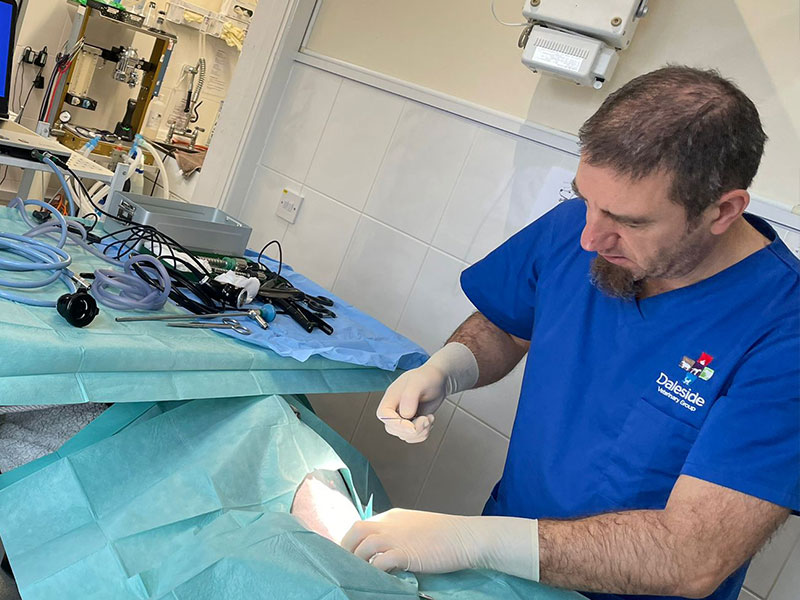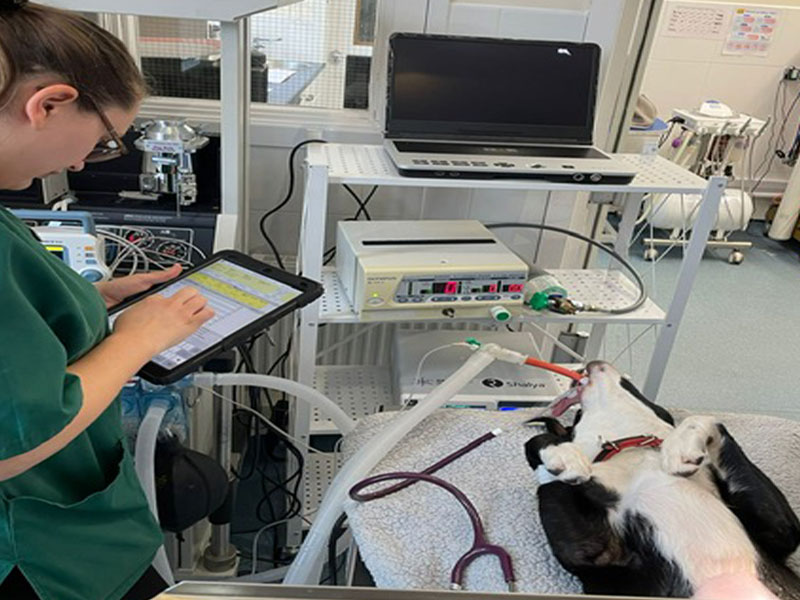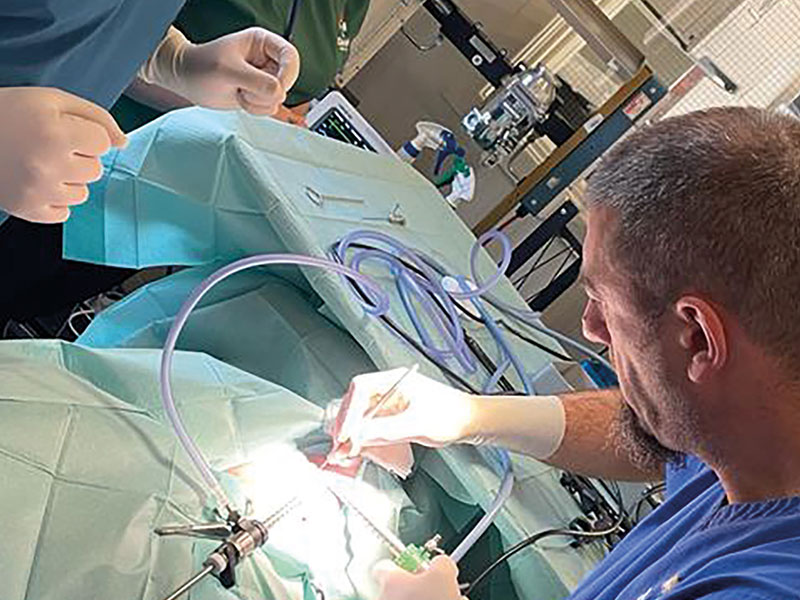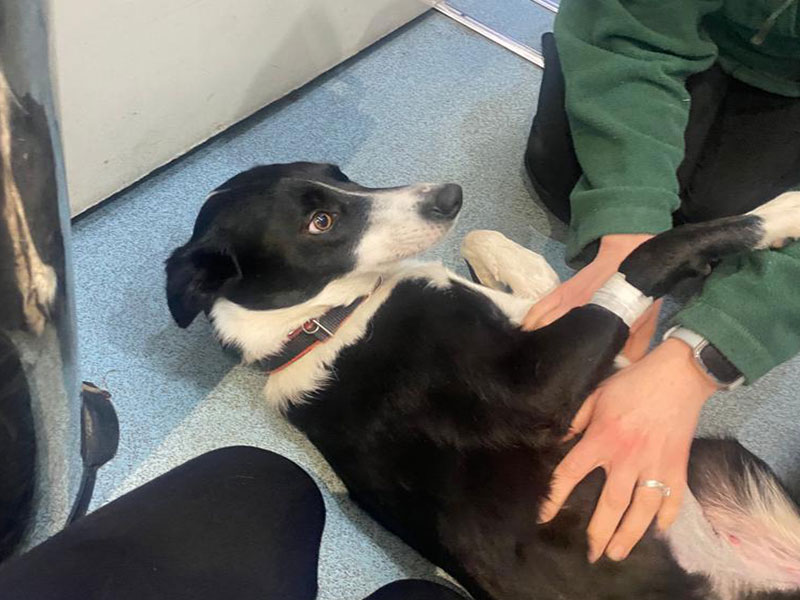Keyhole (laparoscopic) surgery is developing and is offering huge post operative advantages for dogs such as less pain and quicker recovery time.
The traditional bitch spay is undergoing a change. Keyhole (laparoscopic) surgery is developing and is offering huge post operative advantages for dogs such as less pain and quicker recovery time, and owners are now seeking out this technique with increasing frequency.
Post operative pain is vastly reduced through this procedure, a fact that is backed up by studies that compared traditional, and keyhole spay post-operatively. They showed blood glucose and cortisol (indicators of stress) at significantly lower levels from 30 minutes to two days post operatively after the keyhole spay compared to the traditional spay.
Pedometers attached to dogs also show quicker return to higher movement levels, and usually we would only recommend 48 hours rest before returning to normal routine and exercise levels. In the traditional spay 14 days restricted exercise is recommended.
An ovariohysterectomy (removal of both the ovaries and uterus) is the traditional method for spaying. Within the last 15 to 20 years many researchers and practitioners have started to argue against the need for this.
A lifetime study of dogs spayed via keyhole technique has been published in the US and reveals 0% of the dogs involved had any uterine complications in their lifetime. Without the influence of oestrogen (hormone produced by the ovaries) the uterus is dormant and does not need removing.







